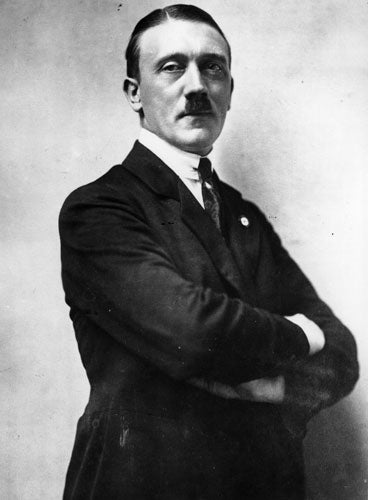Hitler has only got one bull (and it's alive and well in the West Country)
Ancient breed resurrected by Nazis to 'purify' the countryside set up home here

Hitler wanted them to be Aryan cows – ancient beasts resurrected from a time before Europe was populated by "racially degenerate" wildlife.
Hermann Goering was so keen to recreate the one-time prey of Roman hunters that he employed two Nazi scientists to breed the once mighty aurochs back into existence.
The project seemed to have ended with the Second World War when nearly all the cattle kept in Berlin and Munich's zoos were destroyed.
But some 70 years later, the fruit of this deluded labour to bring back to life the gargantuan bovines which roamed Eurasia can now be found peacefully chewing the cud in a few fields on the Devon-Cornwall border.
A herd of 13 Heck cattle, named after the two German zoologist brothers who bred the long-horned, stocky cattle in the Nazi-funded project, has been acquired by a West Country conservationist as part of a rare breeds farm.
Derek Gow, who already has a collection of beavers, polecats and water voles, bought the nine cows and four bulls from a Belgian conservation park which had bred a herd of the shaggy Heck cattle from the few surviving animals left in Munich's Hellabrunn Zoo after 1945.
Mr Gow, 44, who runs a farm at Lifton, near Dartmoor, said: "The Nazis wanted to recreate the aurochs to evoke the power of the folklores and legends of the Germanic peoples. Between the two wars there was thinking that you could selectively breed animals – and indeed people – for Aryan characteristics that were rooted in runes and folklore. Young men hunted these bulls as preparation for battle and leadership in war. Hunting was a very big part of what people like Goering did. This was something that was considered very manly to do."
The aurochs, which weighed up to a tonne and were up to two metres high, was lauded by Julius Caesar as being "a little below the elephant in size" with "extraordinary strength and speed". The animals were hunted into extinction across most of Europe by the 16th century with just a few remaining in early Polish zoos by the 1700s.
Such was the obsession of Goering – the head of the Luftwaffe and Hitler's designated successor – with reproducing a menagerie of ancient "noble" animals to be pursued by the Nazi high command on his personal hunting reserves in Prussia and modern-day Poland that he personally authorised Heinz and Lutz Heck to pursue their programme, begun in the 1930s, to "breed back" through existing cattle varieties to create an aurochs.
Heinz Heck, the director of the Munich zoo who with his brother was an admirer of Eugen Fischer, one of the fathers of the Nazi pseudo-science of race, set about cross-breeding strains including Highland cattle, Freisians and even Corsican cows. Lutz Heck, who ran Berlin's main zoo, crossed Spanish fighting bulls with other breeds and, along with Heinz's cows, the resulting cattle were declared to be the resurrection of the aurochs.
The Munich-based brother wrote after the war that he prized the brute power of his creation, which he said "must be eager to fight to the death". It is now accepted that the Heck cows, some of which were sent to Goering's private shooting estate south of Berlin, were in reality genetically far removed from the aurochs and the brothers had succeeded in creating only a facsimile of the primitive cow. Modern genetics has long established the impossibility of recreating an extinct species.
But Mr Gow strongly denies that his animals are besmirched by their Nazi associations, saying their hardiness means they could eventually be allowed to roam freely like the aurochs.
"I don't think there is anything more sinister in owning Heck cattle than there is driving a Volkswagen," he said. "They were a fantasy breed. But they are also quality cattle and a pedigree breed that is remarkably robust. They could one day be returned to a wild environment and become one of the big super-animals that roamed the forests."
Join our commenting forum
Join thought-provoking conversations, follow other Independent readers and see their replies
Comments